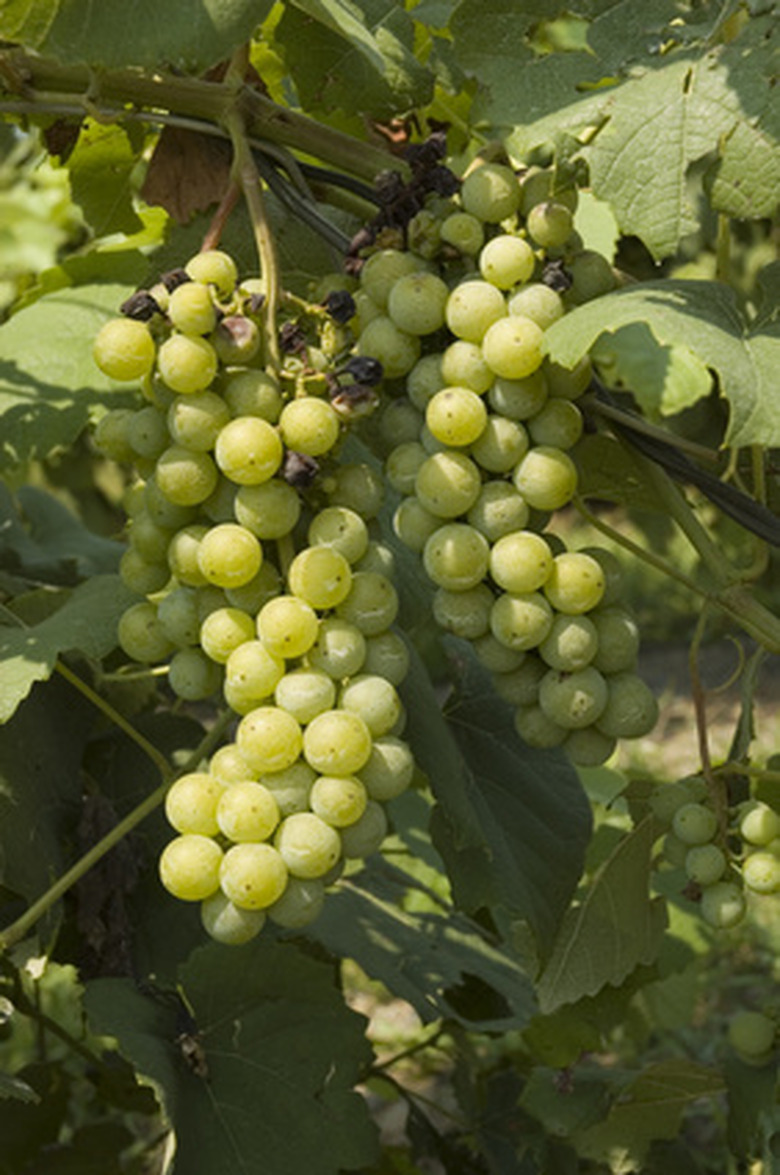Kinds Of Vegetables & Fruits Grown In California
Wherever you live in California, you can grow many different types of fruits and vegetables in your garden. From the cool Central coast to the hot Central Valley, there are plenty of fruits and vegetables that are suited to your particular microclimate. You might not be able to grow artichokes successfully in Sacramento or tomatoes in San Francisco, but with a little knowledge, you'll be able to grow what does well in your region.
Inland Areas
If you live in the Central Valley counties of Tulare, Fresno, Kern or San Joaquin, your summer temperatures can sometimes top 100 degrees Fahrenheit. Home gardens in this part of the state are fortunate because they are well suited to many fruits and vegetables. Cantaloupes, corn, cucumbers, melons, bell peppers, zucchini, tomatoes, grapes, citrus trees of all types, apples, plums, apricots, peaches, nectarines and almonds are some of the many fruits and vegetables you can grow. Provide adequate irrigation and a bit of fertilizer during midsummer, and you'll have success with the fruits and veggies that thrive in hot, dry summers. You might need to provide a little shade during very hot days for young plants and those you have recently transplanted, but once they are established they will thrive in the warm weather. In fall and winter, you can try your hand at growing lettuce, spinach, broccoli and other cabbage family vegetables. Chinese snow peas do well in late winter through early spring.
- Wherever you live in California, you can grow many different types of fruits and vegetables in your garden.
- In fall and winter, you can try your hand at growing lettuce, spinach, broccoli and other cabbage family vegetables.
Central Coast
The counties of San Mateo, Santa Cruz and Monterey all include miles of coastline that are appropriate for growing lettuce, broccoli, Brussels sprouts, cauliflower, artichokes and other vegetables. Strawberries do well here, especially in the Watsonville area. Raspberries, apples, wine grapes and other tree fruits also do well in the cooler climate of the Central Coast. In winter, temperatures don't often drop to freezing, so you can grow lettuce, spinach, snow peas, broccoli and other cabbage family vegetables year-round. If you want to grow tomatoes, choose a variety that doesn't require hot summers, such as "San Francisco Fog" or "Oregon Spring."
Southern California
When you travel south of Monterey, the California landscape begins to change to a more arid environment. Santa Barbara, Ventura, Los Angeles, Orange and San Diego counties are locales where you'll have success growing orange and lemon trees, avocados, dates, figs, persimmons, pomegranates, tomatoes, corn, cucumbers, zucchini and other squash, beans and eggplant. If you live closer to the coast in any of these counties, your weather will be a little cooler and foggier than that found in inland areas. Good garden crops for the coast include radishes, celery, strawberries and salad greens such as radicchio and arugula. Hot inland areas, such as Riverside County, are good environments for growing tomatoes, squash, melons and grapes of all kinds, in addition to many other crops, such as corn and cucumbers.
- The counties of San Mateo, Santa Cruz and Monterey all include miles of coastline that are appropriate for growing lettuce, broccoli, Brussels sprouts, cauliflower, artichokes and other vegetables.
- Hot inland areas, such as Riverside County, are good environments for growing tomatoes, squash, melons and grapes of all kinds, in addition to many other crops, such as corn and cucumbers.
